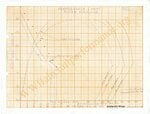GregP
Major
Sorry Fubar57, my stopwatch broke and I don't know.
I'll guess its better than the top speed of a Vespa, though ... the old 2-stroke Vespa, not the modern one fitted with emissions crap. Maybe the Vespa would win if you put an expansion chamber on it ... but where O where would you put an expansion chamber on a Vespa? That's the question. Maybe if you shaped it like a question mark?
I'll guess its better than the top speed of a Vespa, though ... the old 2-stroke Vespa, not the modern one fitted with emissions crap. Maybe the Vespa would win if you put an expansion chamber on it ... but where O where would you put an expansion chamber on a Vespa? That's the question. Maybe if you shaped it like a question mark?
Last edited:

